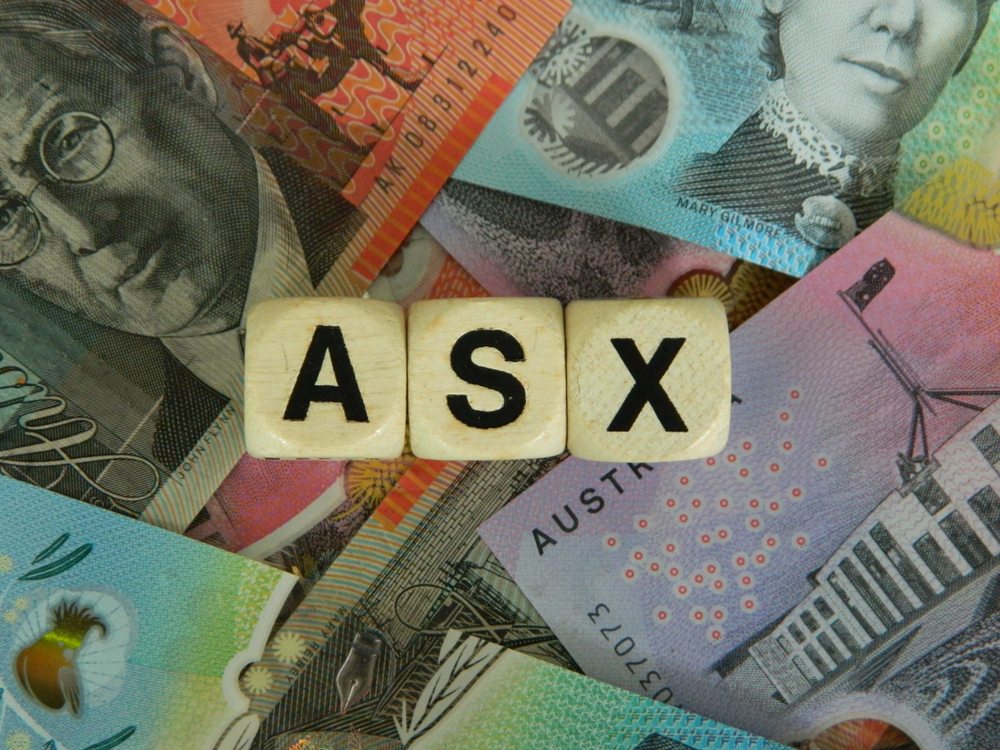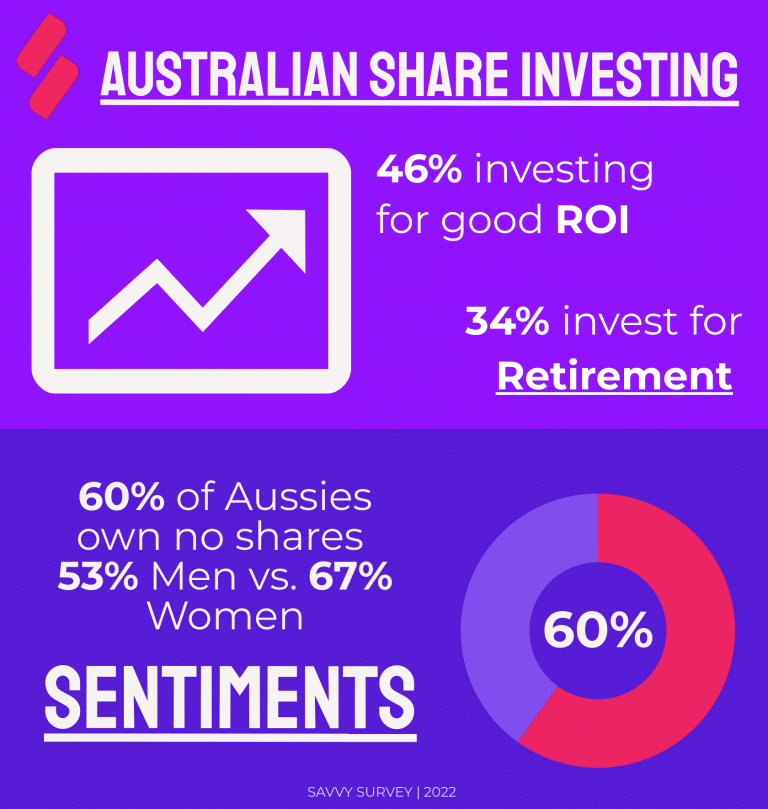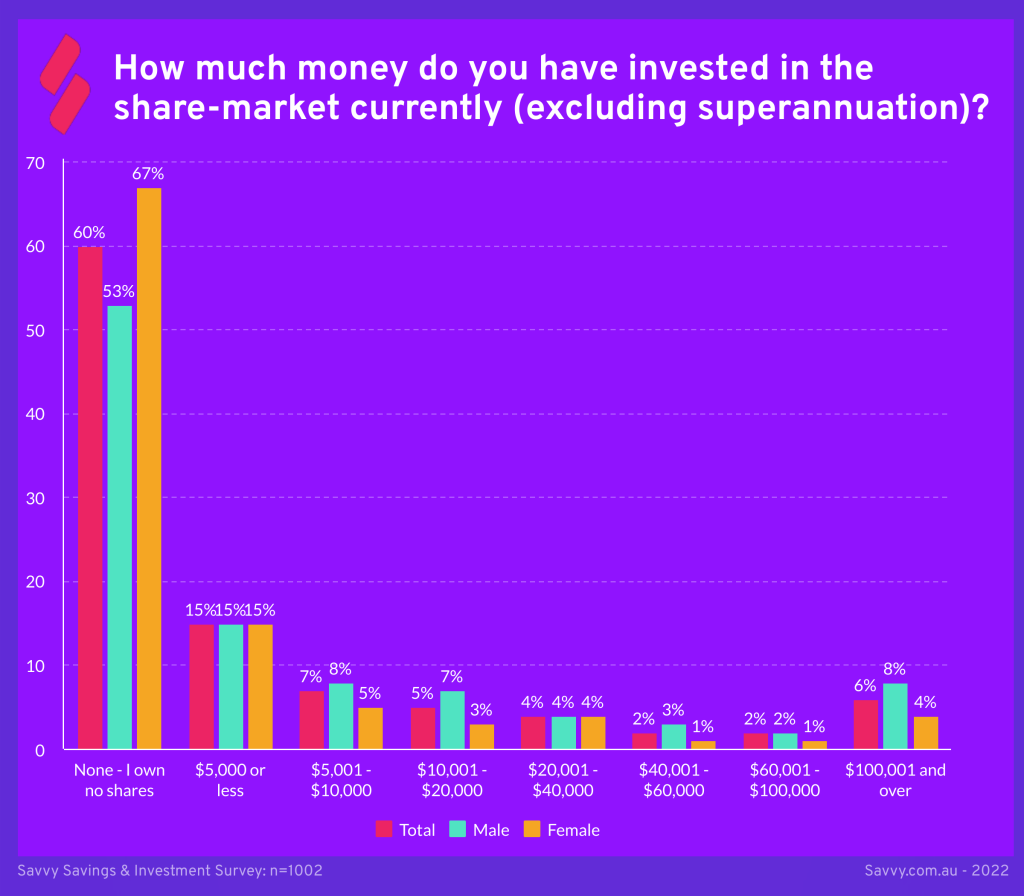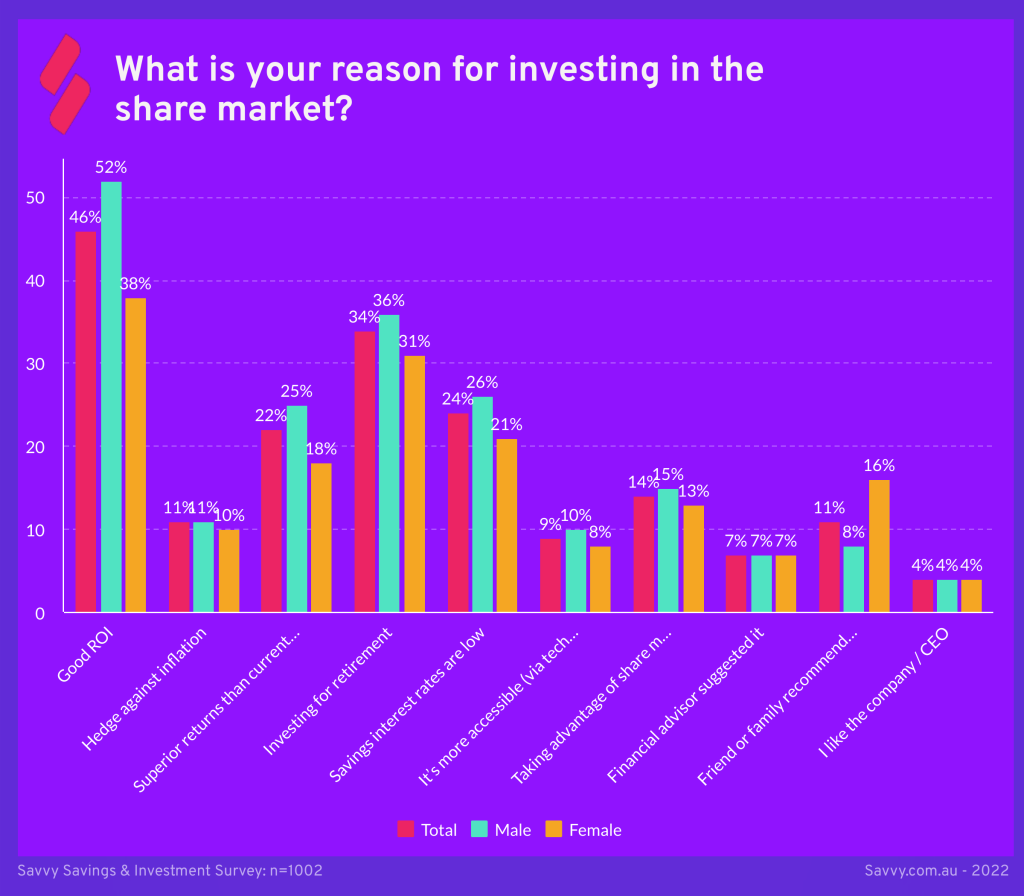
- The Savvy Promise
At Savvy, our mission is to empower you to make informed financial choices. While we maintain stringent editorial standards, this article may include mentions of products offered by our partners. Here’s how we generate income.
In this article
Savvy takes a look at personal finance trends relating to investments in the share market.
- 67% of Australian women have not invested in shares, compared to 53% of men
- 15% of Australians have up to $5,000 invested in shares
- 46% say they are invested as shares provide a “good return”
- 34% say they are investing for retirement
A new survey commissioned by Savvy has revealed that 60% of Australians have no investments in the share market, which includes 67% of women, a little over two-thirds.
About 15% of Australians have somewhere between $1 and $5,000 invested in shares; 7% have between $5,001 and $10,000. 6% say they have over $100,000 invested in shares – 8% of men and 4% of women.
The age cohort with the highest level of investments in shares is the 55–64-year-old demographic, with 13% reporting holdings of over $100,000.
64% of 18 to 24-year-olds reported they have no shares whatsoever.

Reasons for investment
46% of Australians surveyed say they’re invested in shares as it provides a good return on investment; though men (52%) are more likely to express that sentiment than women (38%).
34% say that they are investing in shares for retirement; 36% of men and 31% of women. Another Savvy survey showed that 24% of Australian women currently have superannuation holdings of over $100,000, compared to 44% of men.
24% say that they are investing shares since savings rates are low; 22% say they offer superior returns against current alternatives.
11% reported that they’re investing as a hedge against inflation. This is despite 30% of Australians saying that they are “extremely worried” about inflation outpacing income.


Savvy spokesperson, Adrian Edlington, says that despite the ease of holding shares compared to the years or decades previous, there are still a lot of myths to be busted around investing.
Savvy Spokesperson, Bill Tsouvalas;
“We’ve seen people essentially gamble on shares when they should be thinking of investing as a long-term wealth creation strategy,” Edlington says. “Many people think they need huge sums of money to invest in shares."
“The barrier to entry is lower than ever; all people need now are a bit of spare change and patience to grow their wealth in shares.”
How to invest in stocks in Australia
There are many ways to invest in stocks or shares in Australia. The three main ways are to enlist the help of a full-service stockbroker, use an online stock trading portal or platform, or use micro-investment apps such as Raiz or Spaceship.
A full-service stockbroker may be one of the major stockbroking firms such as Morgans or Ord Minett. They may help retail and institutional shareholders manage their portfolios for a fee. They may also advise you on which stocks to pick, pick on your behalf, and manage your wealth. Furthermore, they may also trade other securities such as derivatives, futures, and options. These stockbrokers are likely part of the Stockbrokers and Investments Advisors Association of Australia. These stockbrokers will need substantial minimum investments (five figures or so) and charge high fees.
Online trading portals or stockbrokers allow you to trade stocks and shares using an app or web platform. You can choose your own stocks to trade or use a “robo-broker” that picks stocks or funds based on algorithms. There may be minimum investment volumes involved.
Micro-investment apps allow you to invest in Exchange Traded Funds and other markets using “spare change” or small amounts. You don’t usually get to pick the stocks individually but can opt for “conservative” or “aggressive” funds based on the composition of the fund. You do not need a minimum investment amount to use these apps, but they do charge fees based on balances or annually.
What is stock trading?
Stock trading is the act of buying or selling shares in a publicly listed company on the Australian Securities Exchange (ASX) or overseas. The share represents a small part of a company. If a company’s share price rises, your holdings rise. If they fall, so does your balance. You make money on selling stocks higher than you paid for them, or wait for dividends which is your entitlement to a share of company’s profits.
What is an ETF?
Exchange Traded Funds or ETFs are relatively low risk investment funds that try to track the value of a specific index or commodity, say the ASX 200 or silver. When you buy into an ETF, you do not physically own any shares. You own a piece of the fund which disburses dividends based on how much you may own and how the market performs. ETFs may be comprised of shares, derivatives, commodities, international shares, property, foreign currencies, bonds, and cryptocurrency.
How much superannuation do I need to retire?
Each situation is unique, however there is some common wisdom when it comes to having enough superannuation in retirement. It depends if you wish to live comfortably or extravagantly.
According to the Association of Superannuation Funds of Australia (AFSA), the figure for a comfortable retirement is around $545,000 for singles and $640,000 for couples. For a more lavish retirement, some analysts say $1 million to $1.5 million is required, especially if you wish to travel during retirement.
Savvy 2022 Savings Survey; n=1002
Nationally representative survey of 1002 adult Australians, aged 18 and over. Conducted by Octopus Group, on behalf of Savvy.
Completion date: 1/09/2022
Age groups:18-24, 25-34, 35-44, 45-54, 55-64, 65+
Gender breakdown: male n=499, female n=495, non-binary /prefer not to say n=6
Representative of state and territory populations:
NSW n=323 (32.3%), Vic n=248 (25.1%), Qld n=203 (20.2%), SA n=73 (7.2%), WA n=105 (10.6%) NT n=8 (0.7%), Tas n=23 (2.2%), ACT n=19 (1.7%)
Did you find this page helpful?
Author
Adrian EdlingtonGuest Contributor
Bill TsouvalasPublished on November 4th, 2022
Last updated on March 15th, 2024
Fact checked
This guide provides general information and does not consider your individual needs, finances or objectives. We do not make any recommendation or suggestion about which product is best for you based on your specific situation and we do not compare all companies in the market, or all products offered by all companies. It’s always important to consider whether professional financial, legal or taxation advice is appropriate for you before choosing or purchasing a financial product.
The content on our website is produced by experts in the field of finance and reviewed as part of our editorial guidelines. We endeavour to keep all information across our site updated with accurate information.










